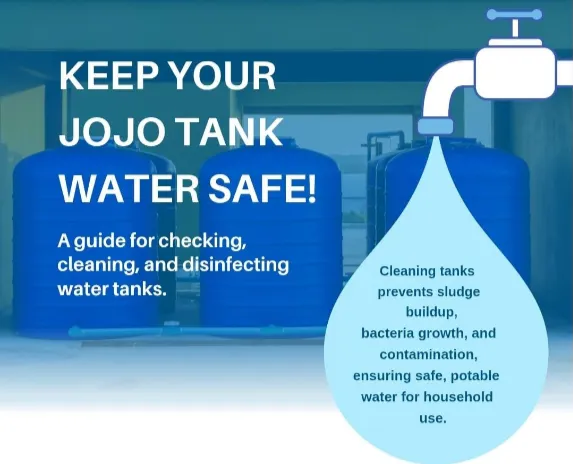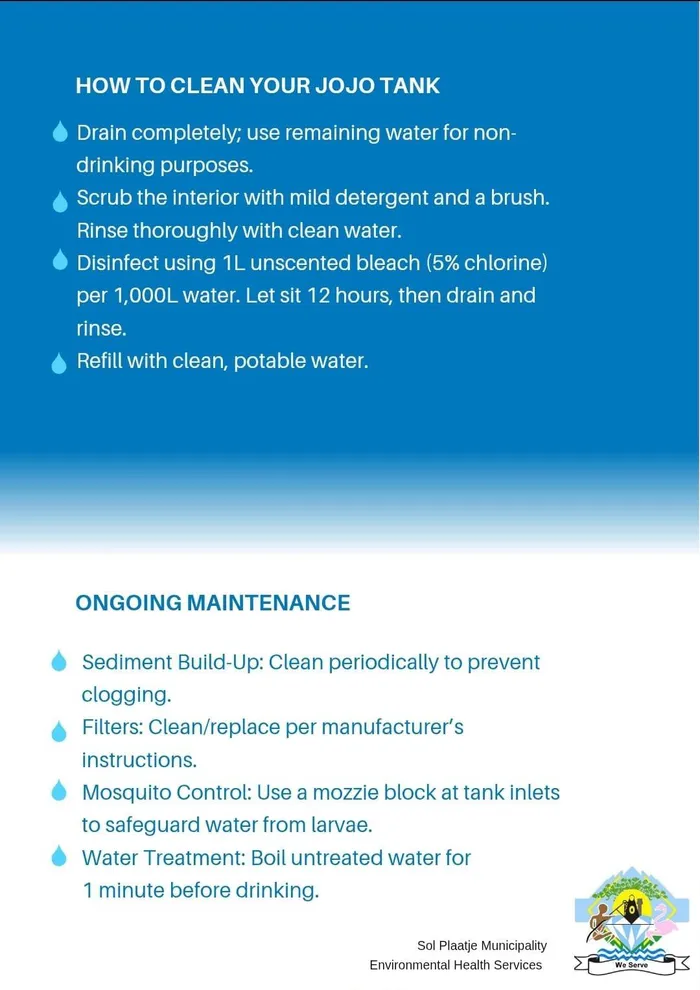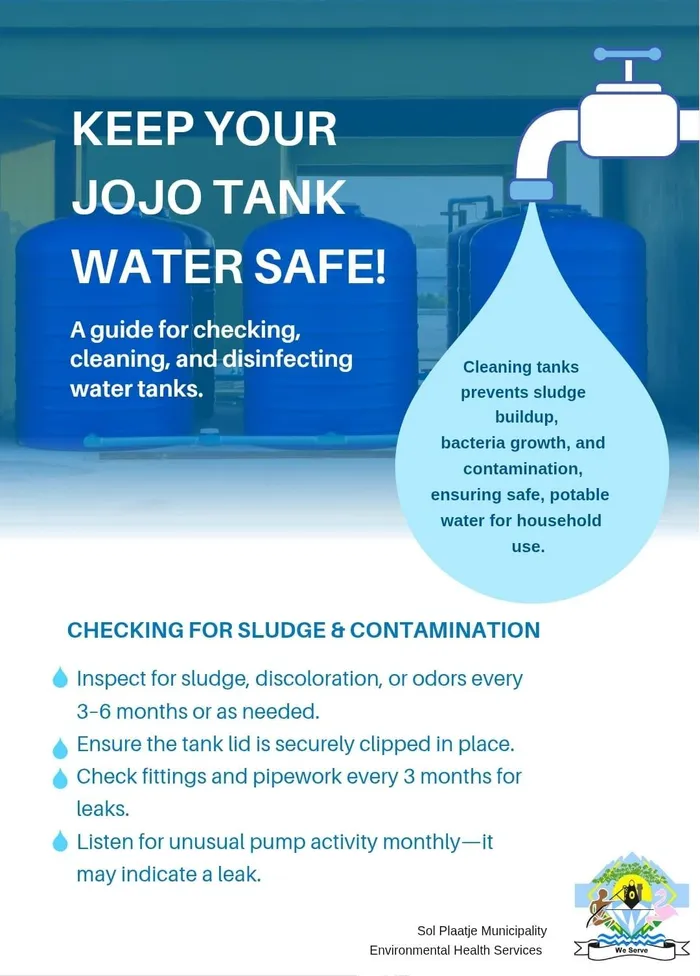Keeping your JoJo tank clean: Tips for safe water storage

Keep your JoJo tank clean and ensure a safe and reliable source of water.
Image: Supplied
AS THE importance of water conservation and storage continues to grow, many city residents are turning to JoJo tanks as a reliable solution. However, with regular use, these tanks can become breeding grounds for bacteria, algae, and other contaminants. Ensure safe and clean water in your JoJo tank with these valuable maintenance tips:
Regular Maintenance is Key
According to water treatment specialists, regular maintenance is crucial in keeping your JoJo tank clean. "It's essential to inspect your tank regularly for signs of contamination or sediment build-up," says a leading expert. "Empty and clean the tank every 6 to 12 months, depending on usage, to prevent the growth of bacteria and algae."
Simple Steps to a Clean Tank
So, how can you keep your JoJo tank clean? Here are some simple steps to follow:
- Use a soft-bristled brush to scrub away any algae or debris that may have accumulated.
- Rinse the tank thoroughly with clean water to remove any remaining dirt or sediment.
- Check and replace the tank's inlet and outlet valves as needed to prevent contamination.
- Ensure the tank's lid and overflow pipe are secure and functioning properly to prevent external pollutants from entering the tank.
- Consider adding a first flush device to divert debris away from the tank.

Keep your JoJo tank clean and ensure a safe and reliable source of water.
Image: Supplied
Test Your Water Regularly
Regular water testing is also crucial in ensuring your JoJo tank remains a safe source of water. "By testing your water regularly, you can identify potential issues before they become major problems," says the expert. "This will help you maintain a clean and healthy water supply for your family or business."
To test the water in your JoJo tank, you can use the following methods:
1. pH Test: Use pH test strips or a pH meter to check the water's acidity level. Aquarium test kits test the water pH, ammonia, nitrite, and nitrate levels.
2. Turbidity Test: Use a turbidity meter or a Secchi disk to measure water clarity.
3. Bacterial Testing: Use bacterial test kits to detect the presence of E. coli, coliforms, or other bacteria.
4. Chemical Testing: Use test kits or send samples to a lab for analysis of chemicals like nitrates, chlorides, or heavy metals.
You can also consider hiring a professional water testing service or sending samples to a certified laboratory for comprehensive analysis.
When testing, ensure you:
1. Follow the manufacturer's instructions.
2. Take samples from the tank's outlet or mid-depth.
3. Handle samples carefully to avoid contamination.
Regular testing helps identify potential issues, ensuring your JoJo tank water is safe for use.
By following these simple tips, you can keep your JoJo tank clean and ensure a safe and reliable source of water for years to come. Remember, regular maintenance and testing are key to maintaining a healthy water supply. Take the necessary steps today to protect your water and your health.

Keep your Jojo tank clean and ensure a safe and reliable source of water.
Image: Supplied
Related Topics: